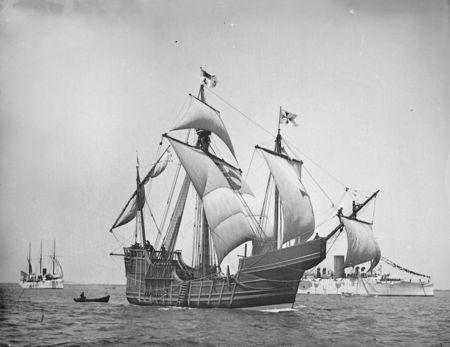Shipwreck off Haiti could be Columbus’s Santa Maria, explorers say

By Zachary Fagenson MIAMI (Reuters) - A shipwreck found off the north coast of Haiti could be the 500-year-old remains of the Santa Maria, which led Christopher Columbus’s famed voyage to the New World, according to a team of marine explorers. "All the geographical, underwater topography and archaeological evidence strongly suggests that this wreck is Columbus' famous flagship, the Santa Maria," Massachusetts marine investigator Barry Clifford said in a press release on Tuesday. "I am confident that a full excavation of the wreck will yield the first-ever detailed marine archaeological evidence of Columbus' discovery of America," he added. Clifford, 68, who led a reconnaissance expedition to the site last month, will hold a press conference Wednesday morning at the Explorers Club in New York to announce the discovery. Clifford said he would like the ship to stay in Haiti as part of a permanent exhibition to help the country's struggling tourism industry. The wreck was discovered in about 10 to 15 feet of water near a reef, and matches the length of the 115-feet keel of the Santa Maria, according to the exploration team. Its geographical location coincides with Columbus' description of where it sank, and stones found at the wreck site match a quarry in Spain that provided ballast for Columbus's ships, the team said. "The size of the wreck is consistent with the dimensions of the Santa Maria," said Dirk Hoogstra, general manager of the History channel TV network which funded the latest expedition to the wreck site. "There's not a whole lot of wood left after all these years," he added, saying it's unclear how much of the ship could be recovered from the sea. The Santa Maria was one of a fleet of three vessels that left Spain in 1492 to look for a shorter route to Asia. The ship, after arriving near the Bahamas, drifted onto a reef and had to be abandoned. Columbus ordered sailors to build a fort nearby before taking the remaining two ships back to Spain to report his findings. Clifford has worked on numerous historic wrecks around the world, including Captain Kidd's flagship off Madagascar. His team first discovered the wreck off Haiti in 2003, but were unable to identify the ship. Yet the discovery of Columbus’ encampment on nearby Haiti and data from the explorer’s diary prove the heavily decayed vessel on the sea floor was the Santa Maria, he now believes. A cannon was initially found as part of the wreck but archaeologists at the time misidentified it as dating from a different historical period, Clifford told CNN. After conducting further research on cannons from Columbus' day Clifford concluded it could have come from the Santa Maria. On last month's reconnaissance trip Clifford's team measured and photographed the ship, although items, including the cannon, had since been looted. (Editing by David Adams and James Dalgleish)

